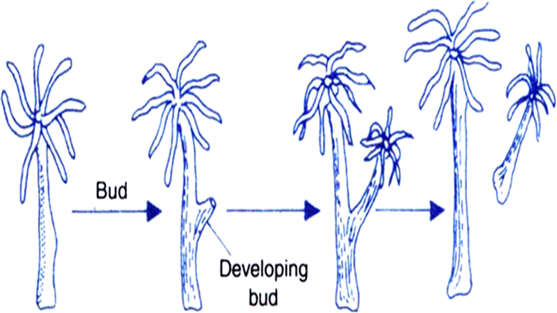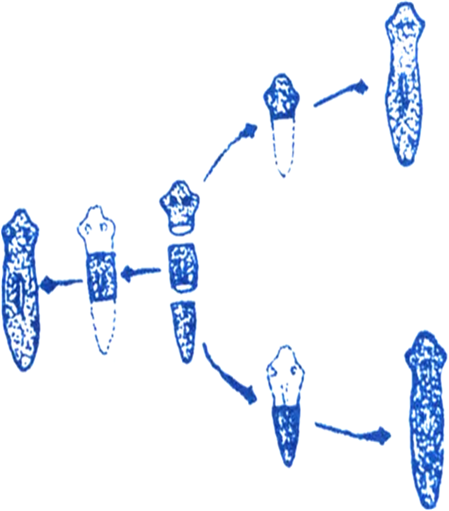Explain budding, spore formation, regeneration and fragmentation modes of asexual reproduction.
(i) Budding: It is the process of formation of an offspring from an outgrowth or bud of a parent. The bud may be unicellular or multicellular depending upon the nature of the parent individual. In coelenterates, tunicates and other multicellular animals it consists of a small number of cells surrounding by an epithelium. In Hydra it is usually formed in the lower half of the body. The buds separate from the parent soon after their formation or after some initial growth. In many cases individuals developed from them do not separate but remain interconnected to form a colony.

Fig. Budding in hydra
(ii) Spore formation a majority of fungi and bacteria asexually reproduce by sporulation. In fungus, a sporangium develops from the fungal hypha. The nucleus divides several times within the sporangium. Each nucleus gets surrounded by a bit of cytoplasm to form spore. On maturation of sporangium (formation of spores), the sporangium ruptures to liberate a large number of minute spores. The spores develop into new hypha after reaching suitable substratum. Example, Mucor, Rhizopus, Penicillium.
(iii) Regeneration: The ability of an organism to replace its lost body parts is called regeneration. Hydra, Planaria and sponges exhibit regeneration. In hydra, 1/6 mm body piece is capable of regenerating into an entire individual.

Fig. Regeneration on planaria
(iv) Fragmentation: The mature Spirogyra (an alga) breaks into two or more pieces (fragments). Each fragment grows into new individual. The process is called Fragmentation.
2405 Views


